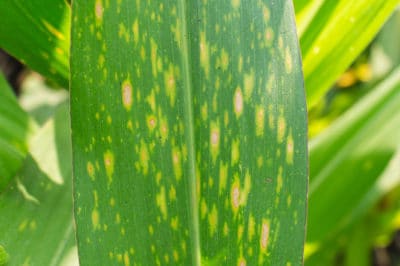What is Southern Corn Leaf Blight?
Southern corn leaf blight is one of the most pervasive diseases you can find in your corn crop. Once the disease has infiltrated your cornfield, no treatment will prevent it from spreading through the entire field.
If you live in the Southeastern part of the United States, you are more likely to experience southern corn leaf blight in your corn crop. The fungus thrives in warm, humid environments. However, you can see the disease anywhere corn is grown.
Identifying Southern Corn Leaf Blight
It is essential to regularly inspect the leaves of your corn plants to check for the disease. Southern corn leaf blight appears as small, oblong discolorations along the bottom leaves of the plant.
These tan lesions can grow as long as one inch (2.5 cm) long but stay around a quarter inch (0.3 cm) wide. As the fungus spreads, your corn stalks may start to weaken and fall over, and the ears of corn will mold. It is entirely possible to lose your entire crop once you notice this disease.
Treating Southern Corn Leaf Blight
Sadly, there is no way to treat southern corn leaf blight once the fungus attacks your crop. However, there are several things you can do to prevent this disease from ruining future plantings.
- Rotate your crops. You should have your corn on a four-year rotation cycle.
- Burn crop debris. Instead of using your corn stalks and leaves as compost, burn them.
- Till the ground at least twice after you have removed and burned the corn debris.
Tip: Planting hybrid corn may also help prevent southern corn leaf blight.
If you follow preventative measures, it is possible that you can avoid ever having to watch your corn crop slowly wither and die from southern corn leaf blight and can enjoy fresh corn every year.
